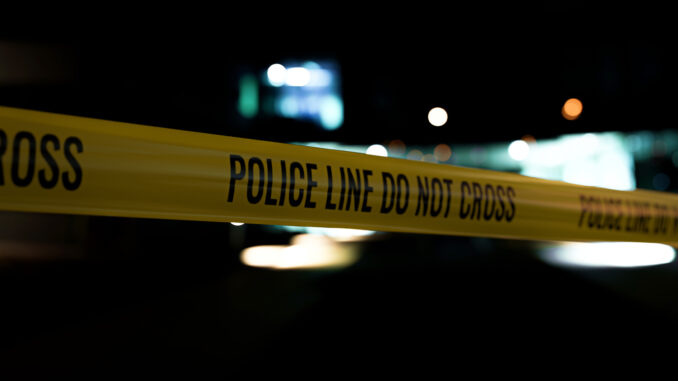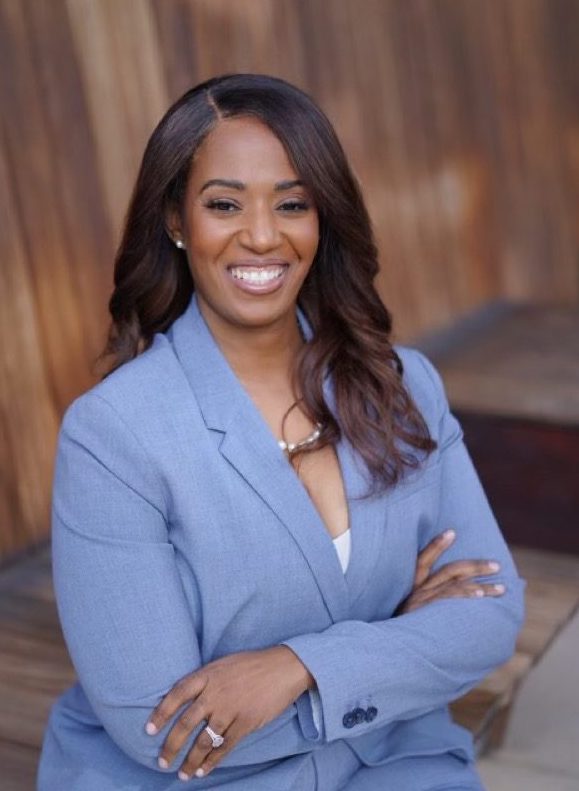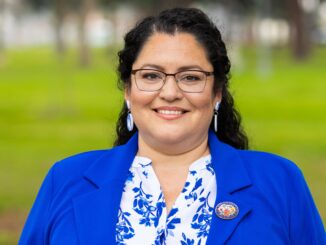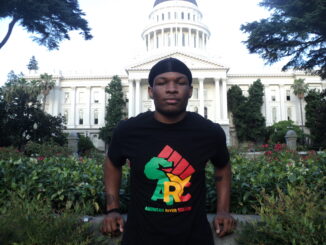
by Anne Stokes
While you can’t put a price on lives lost to gun violence, the cost of its aftermath is staggering: $557 billion. Factoring in immediate and long-term medical care, work-loss costs for victims and perpetrators, criminal justice costs, employer losses, and quality of life losses for victims and families, gun violence costs every US resident $1,698 a year.
When Alana Mathews ran for Sacramento County district attorney earlier this year, she ran as a Gun Sense candidate. As someone who experienced gun violence firsthand, she is well aware of the long-lasting trauma it causes. As a former Sacramento County prosecutor, one of her priorities has been getting guns out of the hands of people who shouldn’t have them. Still, she recognizes that the drivers of gun violence are complicated.

Alana Mathews, district attorney candidate
“We think gun violence is just a matter of people choosing to use guns and we are not looking at the systemic infrastructure that’s in place which allows guns to be brought into communities,” she says. “It’s an inability to meet one’s needs, it’s poverty, (it’s) when you have a lack of economic investment. … When we look at cycles of trauma, people being exposed to violence, and having that history without access to mental health care or without a priority of healing past trauma in communities, then it’s just going to continue.”
According to a 2021 study by the Public Policy Institute of California, Latinos have higher poverty rates than other groups: 21.4% of Latinos experience poverty versus 12.1% on non-Hispanic white populations. Additionally, 35.7% of undocumented immigrants live in poverty.
And according to the Centers for Disease Control and Prevention, gun violence also disproportionately affects Latino and Hispanic communities:
- Between 2016 and 2020, an average of 11 Hispanic people died from gun violence daily.
- That rate increased 66% since 2014—twice the national rate increase.
- Hispanic communities make up 40% of California’s population, yet represent 48% of gun homicide victims.
Not only do communities of color experience more incidents of violence, they also tend to lack the resources to invest in preventative measures such as educational programs and infrastructure, health and mental health services, financial opportunities and more.
“The priority of most law enforcement entities, such as the district attorney’s office or even police, is to be reactive to gun violence instead of trying to work to prevent and intervene in gun violence,” Mathews says. “We just have policies put in place that are reactive when harm happens. It’s not prioritizing preventing harm from happening in the first place.”
Gun violence in America is an epidemic, but it is not inevitable. Information and resources about gun violence can be found through a number of organizations, including Moms Demand Action, Everytown for Gun Safety and Giffords Law Center to Prevent Gun Violence. Voting for gun safety measures and Gun Sense candidates is vital. Locally, Mathews’ advice is to seek out and support violence prevention programs.
“We just have policies put in place that are reactive when harm happens. It’s not prioritizing preventing harm from happening in the first place.”
Alana Mathews, district attorney CANDIDATE
“They’re out helping people, working with youth, or working with individuals who might be more vulnerable to become victims of gun violence,” she says. “[People] can donate, they can volunteer their time, or if they’re a business owner, they can offer jobs to someone who would otherwise be vulnerable so that they have a pathway to create a healthier, safe, thriving life.”
For more information and resources on gun violence—including endorsements for local, state and federal Gun Sense candidate —visit Moms Demand Action atwww.momsdemandaction.org, Everytown for Gun Safety at www.everytown.org, and Giffords Law Center at www.giffords.org.




